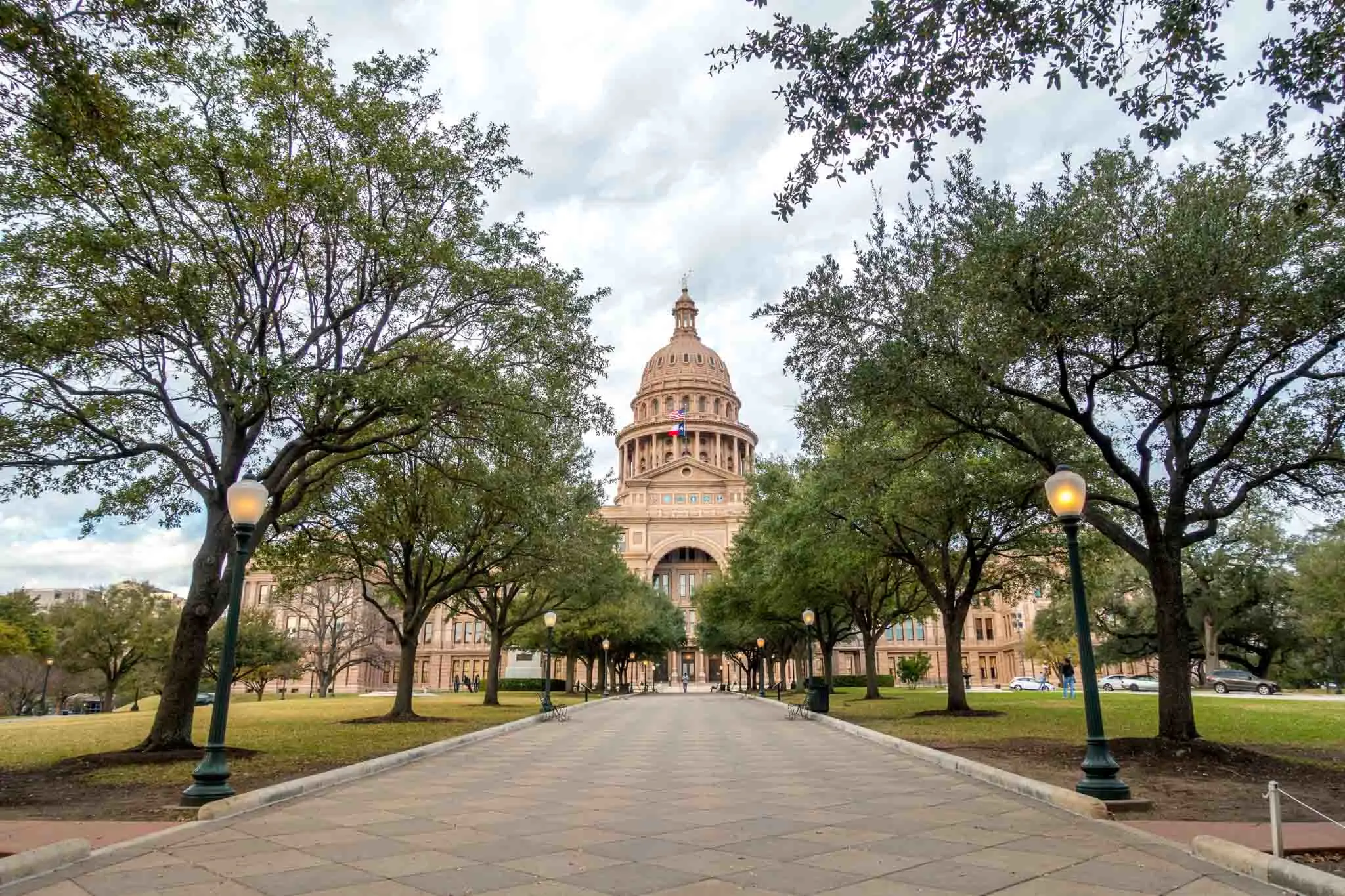Things to Do in Wimberley, Texas, for a Fun Trip
Amid the eye-catching Texas Hill Country landscape is the tiny town of Wimberley.

Laura grew up in Texas and her family still lives there, so it’s a place we explore frequently. Full of great cities like Austin, delightful small towns like Fredericksburg, and unusual spots like Luckenbach, there’s always something new to uncover in the Lone Star State.
Population: 28.99 million
Size: 268,596 square miles
Capital: Austin
Major cities: Houston, San Antonio, Dallas, Austin, Fort Worth
Before Europeans arrived, the land now known as Texas was home to three indigenous cultures. There is evidence of the Pueblo people, the Mound Builders, and people from Mesoamerica all inhabiting the area. In the early 16th century, European explorers arrived ready to stake their claim.
The amusement park Six Flags Over Texas got its name from the six flags that have flown over Texas during its modern history—Spain, France, Mexico, the Republic of Texas, the Confederate States of America, and the USA. Spain ruled the territory beginning in 1519, and the control lasted until the early 19th century minus the time from 1685-1690 when the French attempted a colonization effort. The Spanish are responsible for some of the state’s most notable monuments, specifically the missions of San Antonio that are recognized at UNESCO World Heritage sites.
Mexico overthrew Spanish colonial rule, taking over control of the Texas territory from 1821 to 1836 when the state won its independence. The Constitution of the Republic of Texas ensured that the government could not restrict slavery or free slaves, required free Blacks to leave the country, and prohibited Native Americans from becoming citizens.
In 1845, Texas became the 28th state in the United States. Around this time, an influx of Czech and German settlers arrived, settling the area in the central part of the state. These immigrants developed a unique culture, vestiges of which still exist through the state’s German towns and sites like gorgeously decorated churches.
The affiliation with the US lasted less than two decades, and the state seceded in 1861, officially joining the Confederate States of America. At the time, 30 percent of the population was Black, and they were predominantly enslaved. Following the Civil War, Texas rejoined the Union in 1870.
Texas is the second largest state and it’s larger than many countries, including France and Germany. That means there is lots of space to explore, and there are often long distances between destinations. Driving is the easiest way to get around if you’re looking to visit several cities, and especially if small towns are on the agenda. Within the state, Southwest Airlines links major cities with short flights.
The climate and landscape vary greatly across the state. You’ll find plains, desert, prairies, piney woods, beaches, and even the mountains of Big Bend. Texas even has a major wine region in the Hill Country where the climate and soil are similar to those of the Mediterranean. Make sure to check the weather for all your destinations and pack layers, as the weather is known to change quickly.
Amid the eye-catching Texas Hill Country landscape is the tiny town of Wimberley.
Kerrville, Texas, offers lots of shopping, art galleries and theaters, and several riverfront parks. With natural beauty, unique attractions, and great barbecue, there is lots to discover (and eat!) here.
Just a half-hour from Austin, Dripping Springs, Texas, combines some of the best outdoor activities in Texas with the food and craft beverages usually only seen in the cities.
Texas may not be the first place you think of for high-quality wine from the US. But you’d be missing out. These eight wineries offer remarkable scenery and award-winning wines.
Dallas is about BBQ and cowboys—both the football kind and the calf-roping kind—but it’s so much more than that, too.
Whether you’re looking for an adventurous weekend or a relaxed day trip, you’ll find plenty of fun things to do in Boerne.
Fredericksburg, Texas, is a small town with a booming restaurant scene. With great Texas wine, German specialties, and plenty of Tex-Mex and burgers thrown in, …
Despite its proximity to big cities, Fredericksburg, Texas, is popular because it maintains a small town feel while having so many things to see and do. From wine tasting to taking in the local history, you’ll never be bored in Fredericksburg.
Christmas in Fredericksburg, Texas, combines German traditions passed down through generations with the charm of the Hill Country and all the fun things the town is known for.
Austin is like nowhere else in Texas. With ubiquitous live music and street art and a ridiculous amount of breakfast tacos and breweries, Austin is brimming with character.